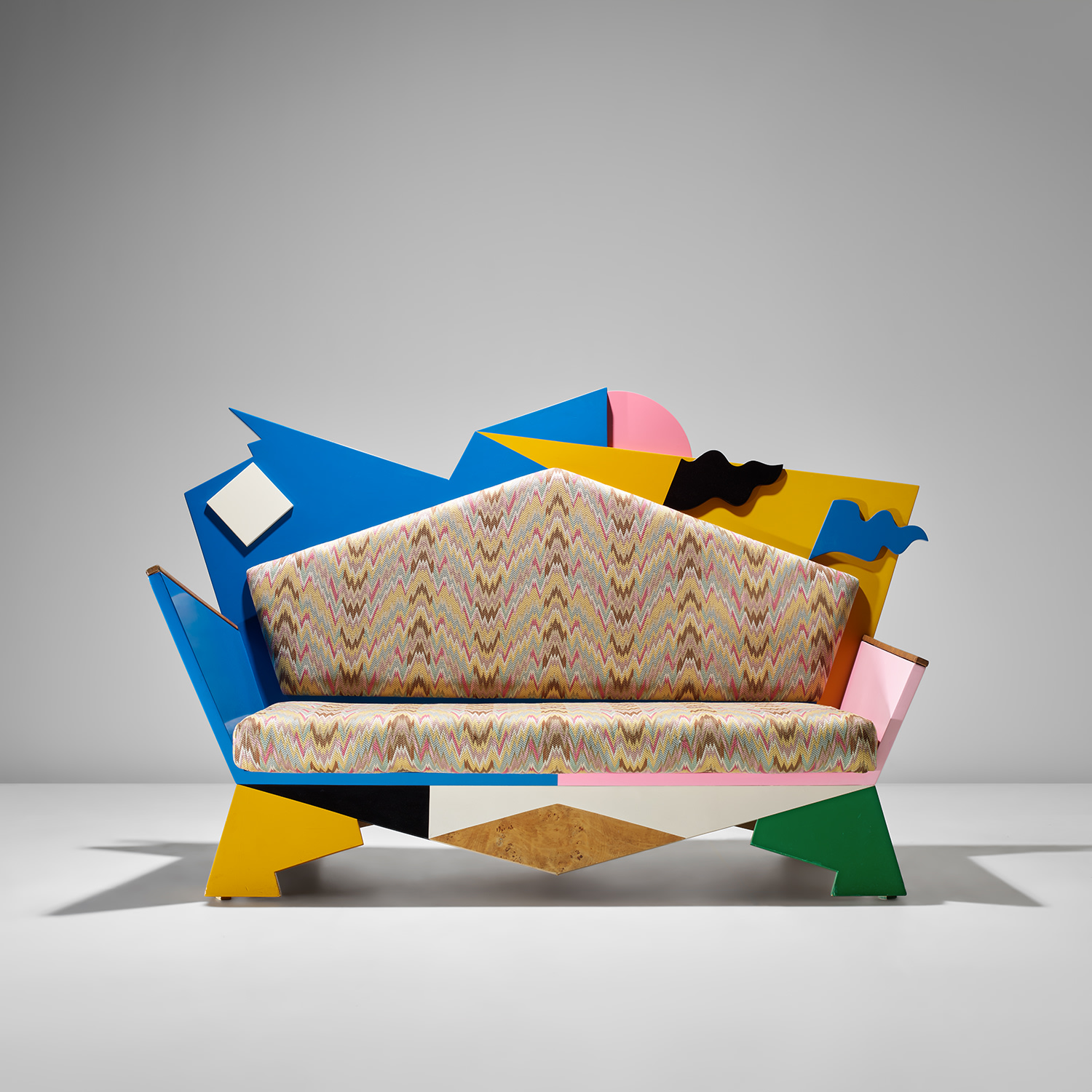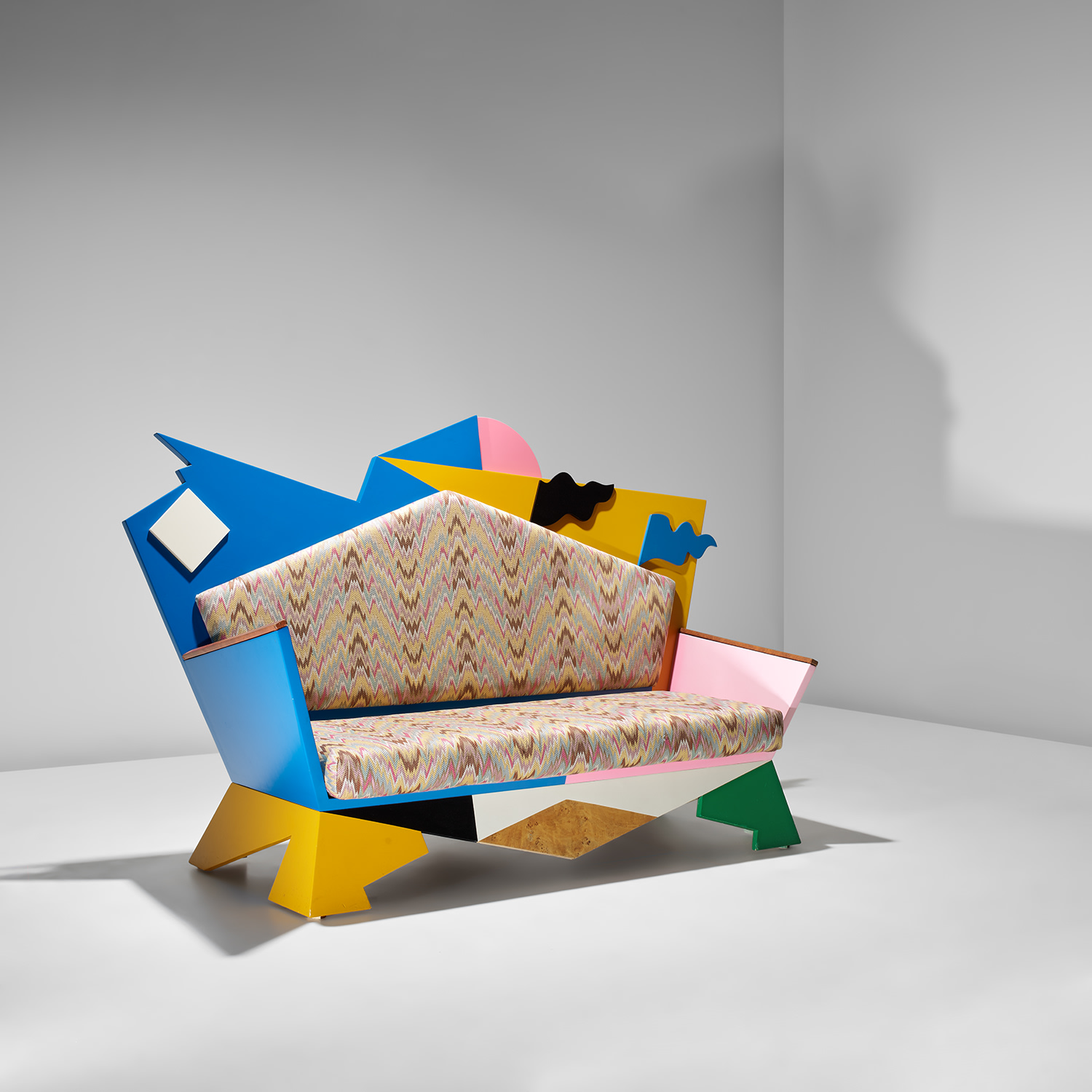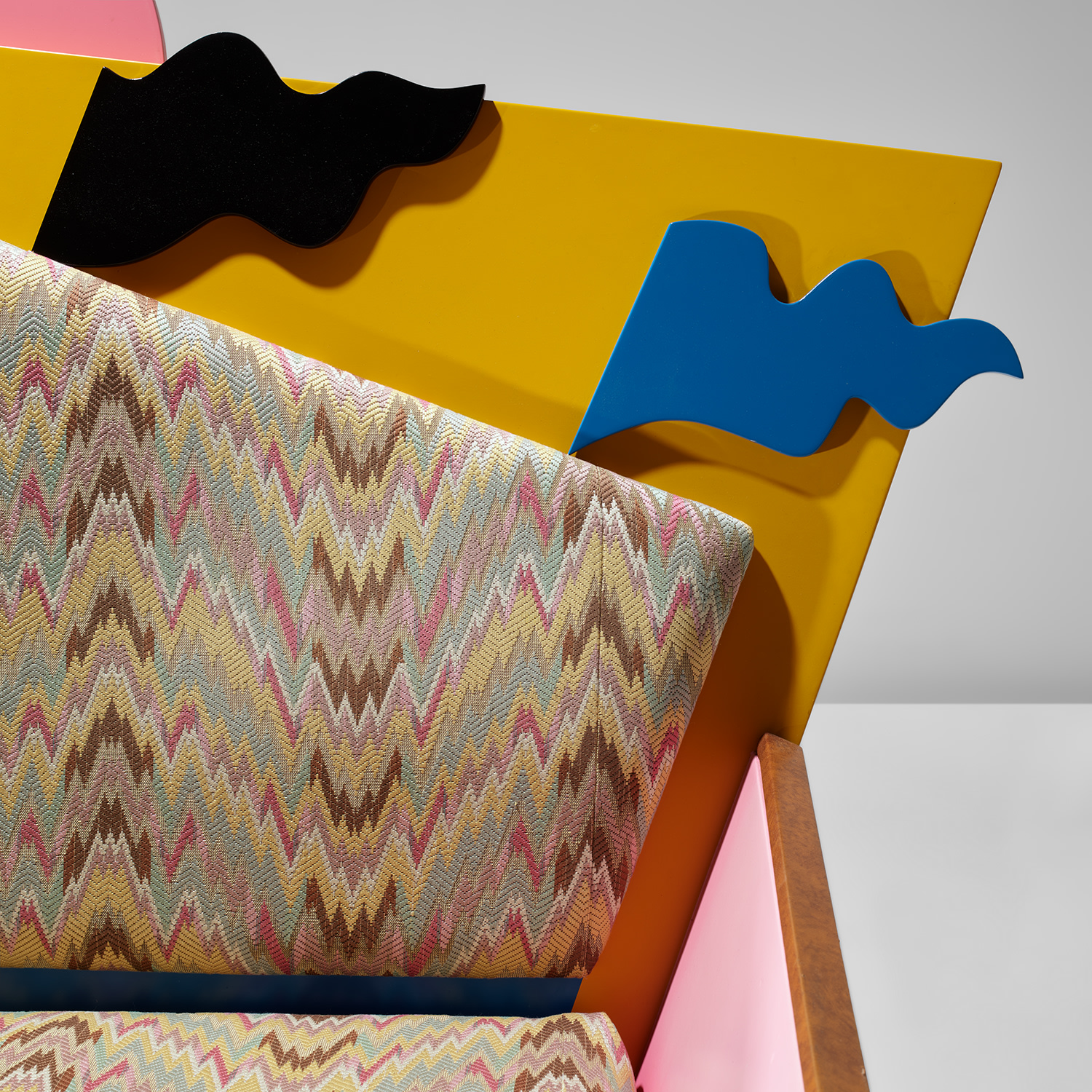









38
Alessandro Mendini
'Kandissi' sofa
1978
Painted wood, burr birch-veneered wood, fabric, vinyl.
124 x 193 x 84.6 cm (48 7/8 x 75 7/8 x 33 1/4 in.)
Produced by Studio Alchimia, Milan, Italy. Together with a certificate of authenticity from the Atelier Mendini.